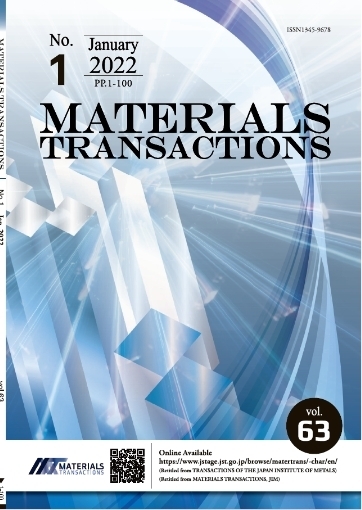Theoretical Approach for Long-Ranged Local Lattice Distortion in Al-Rich AlX (X = H∼Sn) Disordered Alloys by Kanzaki Model Combined with KKR Green’s Function Method
Mitsuhiro Asato, Chang Liu, Nobuhisa Fujima, Toshiharu Hoshino
pp. 1429-1438
Abstract
The local lattice distortion (LLD) effects in the disordered alloys with the large atomic-size misfit between the constituent elements are well known to be essential for reproducing theoretically the observed phase diagrams including order-disorder critical temperatures, although the theoretical approach from first principles remains a long-standing problem. We propose the Kanzaki model combined with the full potential (FP) Korringa-Kohn-Rostoker (KKR) Green’s function method, as an approximation for the direct FPKKR calculations, which is based on the harmonic approximation of the atomic displacements and enables us to study the long-ranged LLD effects in the disordered alloys. We first show that the present Kanzaki model may reproduce very accurately the LLD energies obtained by the direct FPKKR calculations with the restriction on the displacement of only the 1st-nearest neighboring atoms around a single impurity X in Al, although the discrepancy increases with the atomic-size misfit between Al and X atoms. Second we clarify the fundamental features of the LLD energies (over ∼10000 atoms) around a single impurity X (= H∼Sn) in Al, corresponding to the 1-body part in our real space cluster expansion for the LLD energy in the Al-rich AlX disordered alloy; the 1-body LLD energy becomes larger and more long-ranged with the atomic-size misfit between Al and X elements and also with the sp-d interaction of Al-X (X = d element).










